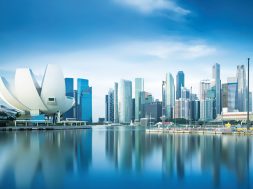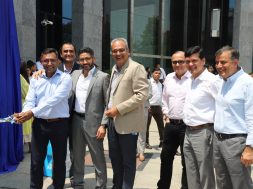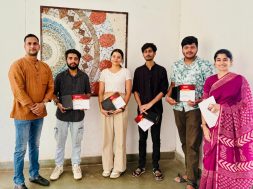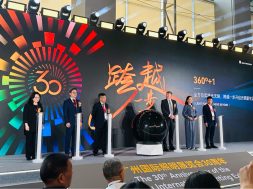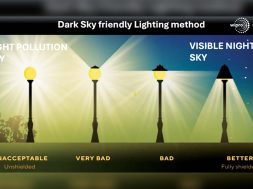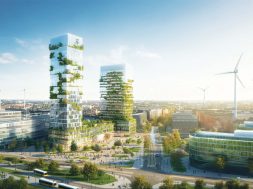Shaping sustainable skyline
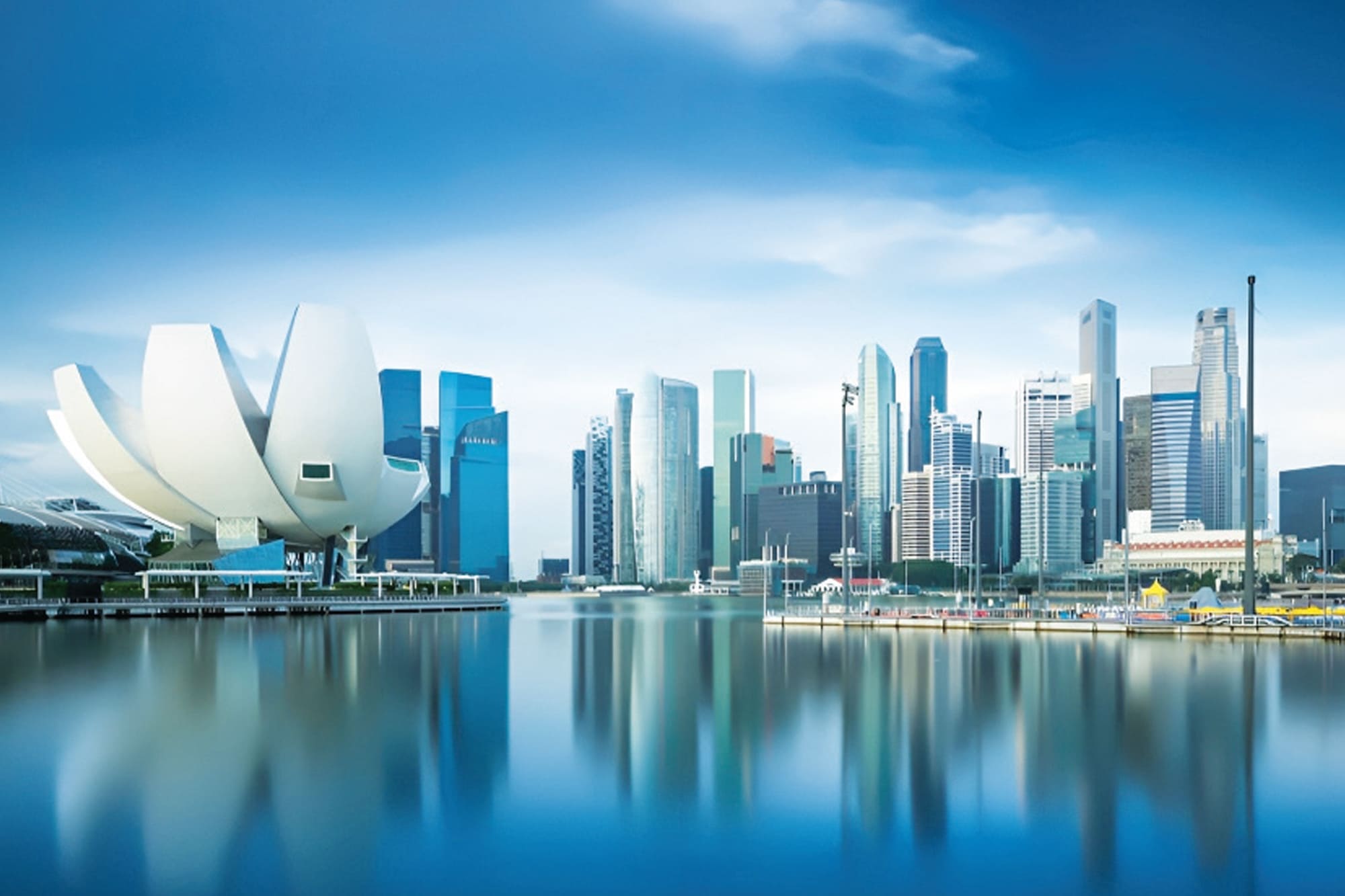
Prominent figures in the architecture industry have expressed their insights to Akanksha Vichare, Associate Editor of ACE Update, on the subjects of innovation and sustainability. They are challenging conventional practices and creating sustainable wonders that effortlessly harmonise aesthetics with environmental mindfulness.
In the bustling city of Mumbai in 2035, a transformative wave of sustainable construction will sweep across India. As the sun rises over the skyline, its rays will gleam off the glass facades of eco-friendly buildings that dot the landscape, a testament to the nation’s commitment to a greener future.
The catalyst for this change is suggested by the visionary architects Kshiti Bhargava, Sr. Architect, Arcmax Architects & Planners, Ar. Anika Mittal Dhawan Founder & Director Mold Design Studio, Ar. Om Merchant Founder & Principal Consultant Architecture Associates, Ar. Akbar Bashu, Design Head – Bengaluru IMK Architects, Uttam Kumar Gupta, Manager Projects & Institutions Gypmart India Pvt. Ltd., in the online discussion of ACE Update Magazine on India’s Future in Sustainable Construction where they talk about innovation and sustainability, challenging norms, and crafting sustainable marvels for future.
This discussion presents a thought-provoking stance, highlighting the imperative of architects to persuade clients through tangible proof of the benefits of sustainable practices. Sustainability contributes to a healthier environment and offers compelling financial advantages. In this meticulous exploration, the intricacies of green building designs demonstrate how they result in long-term cost savings, increased energy efficiency, and enhanced property values. This perspective propels sustainability into the economically appealing choices for builders and clients. Kshiti states, “Our mission is to grasp sustainability, recognising that while technology benefits the audience and architects understand its components, the challenge lies in convincing well-educated users about the tangible financial gains of sustainability in building construction, shifting the conversation towards demonstrating the practical value and aligning with the client’s philosophy of embracing sustainable practices.”
IMK’s vision for India’s future has become particularly significant. As the nation grapples with the dual challenges of rapid urbanisation and environmental conservation, the need for sustainable construction practices has never been more critical. IMK’s innovative approach meets the present demands and lays a robust foundation for the future. Ar. Akbar, sheds light on the meticulous integration of sustainable practices in architectural design. With a commitment to the IMK architect’s basic structure, Akbar explores the challenges and successes in utilising sustainable materials, emphasising the ongoing efforts to enhance clients’ understanding of net-zero and sustainable building practices.
While commenting on commercial buildings, they often leverage marketing and projection to showcase sustainability; initiating such dialogues can be challenging in smaller projects. This acknowledges the difficulty and emphasises the significance of overcoming these challenges. Sustainability’s value to smaller projects may be less conspicuous but remains substantial, making it imperative to integrate sustainability discussions regardless of project scale. Ar. Anika addresses sustainability misconceptions, emphasising that it doesn’t equate to added costs or compromised innovation and aesthetics. She stresses “the architect’s duty to educate clients on sustainable design’s long-term benefits and business advantages.
True sustainability goes beyond mere affordability; it hinges on a collective understanding of its principles. This understanding requires education among individuals and within the corridors of government, developers, and clients. As a society, we must foster a culture of exploration and innovation to break away from the prevalent habit of reproducing existing designs and concepts. The prevailing trend of seeking inspiration from external sources often replicates existing designs. The call is for a paradigm shift and embracing a more exploratory attitude. Om states, “The call for collective efforts to raise awareness and advocate education for government, developers, and clients is needed.” He further challenges architects to embrace exploration, emphasising that true sustainability creates new and unique marvels.
The community places high expectations on architects, seeking their technical expertise and social responsibility. Meanwhile, the architects face challenges in meeting community expectations while navigating imitation issues and staying relevant in evolving times. The critical aspect lies in assessing the success of architectural education when applied to real-world scenarios, particularly for community decisions and government involvement in the projects. Kshiti states, “Convincing clients of innovative solutions requires succinct proof, not just recommendations. Sustainability is more than materials; it’s about embracing technology, seeking accessible funds, and recognising that knowledge alone doesn’t suffice; it’s the application that truly matters.”
Architects are perpetual innovators, constantly seeking creative methods to enhance building resource efficiency. The focus extends beyond using water and energy to encompass a broader spectrum of resources. This proactive approach underscores the commitment to sustainable practices that conserve resources and contribute to the aesthetic appeal of architectural designs. Architects must adopt a comprehensive strategy when dealing with technologies and materials that are yet to become mainstream. Each element is carefully chosen and responsibly handled, ensuring a harmonious integration into the overall design. This approach addresses the challenges posed by unfamiliar technologies, transforming them into opportunities for sustainable innovation. Anika affirms, “Sustainability in architecture isn’t just about staying informed; it’s about mastering the application of eco-friendly materials and technology.” She further states that architects constantly innovate, seeking creative solutions to blend beauty and resource efficiency in our built environment.
Sustainable building materials play a pivotal role in shaping environmentally conscious construction practices. Gypsum, a construction material with a rich history, is experiencing a resurgence in the modern era. While it has been a known entity for a considerable time, recent innovations and awareness have propelled it into the spotlight as a sustainable alternative. While gypsum plasters gain popularity in regions like Hyderabad, Mumbai, and Karnataka, some developers in the east still adhere to the traditional use of cement and sand. Bridging this regional gap and fostering a collective understanding of Gypsum’s benefits become imperative to propel the material into mainstream construction practices. Uttam states, “Gypsum, a timeless construction material, stands as a sustainable solution with swift application, eco-friendly attributes, and vast business potential, challenging traditional choices like sand and cement.”
Cookie Consent
We use cookies to personalize your experience. By continuing to visit this website you agree to our Terms & Conditions, Privacy Policy and Cookie Policy.
